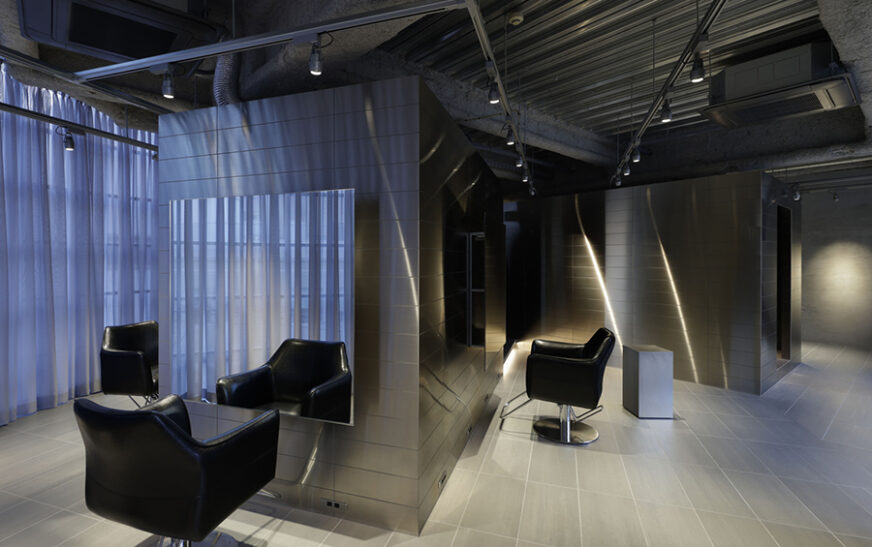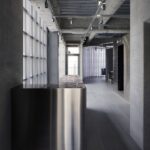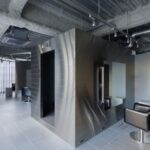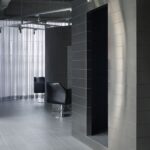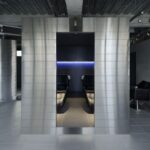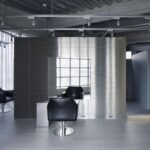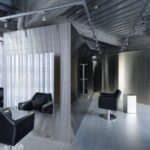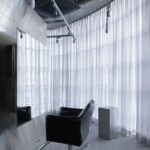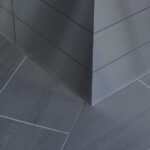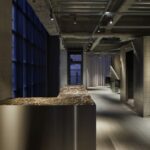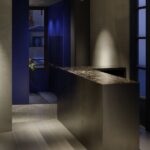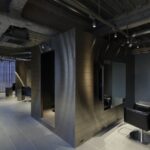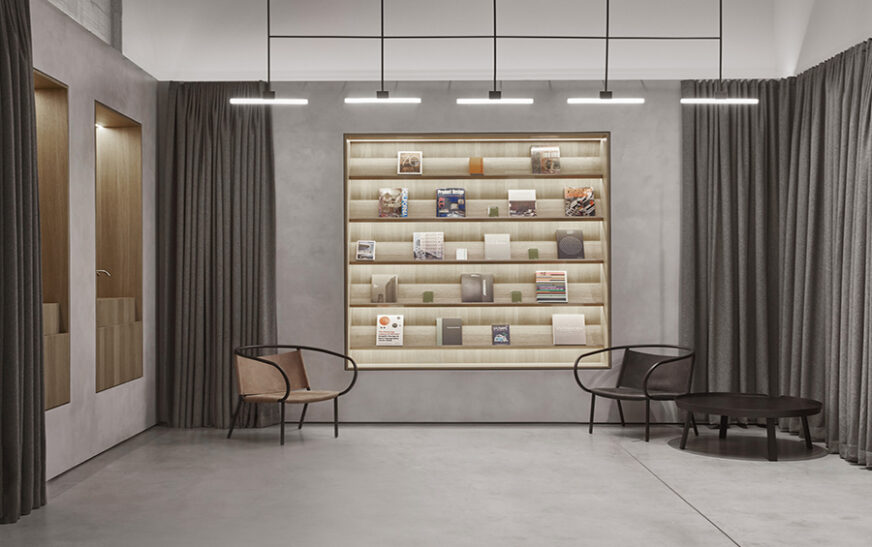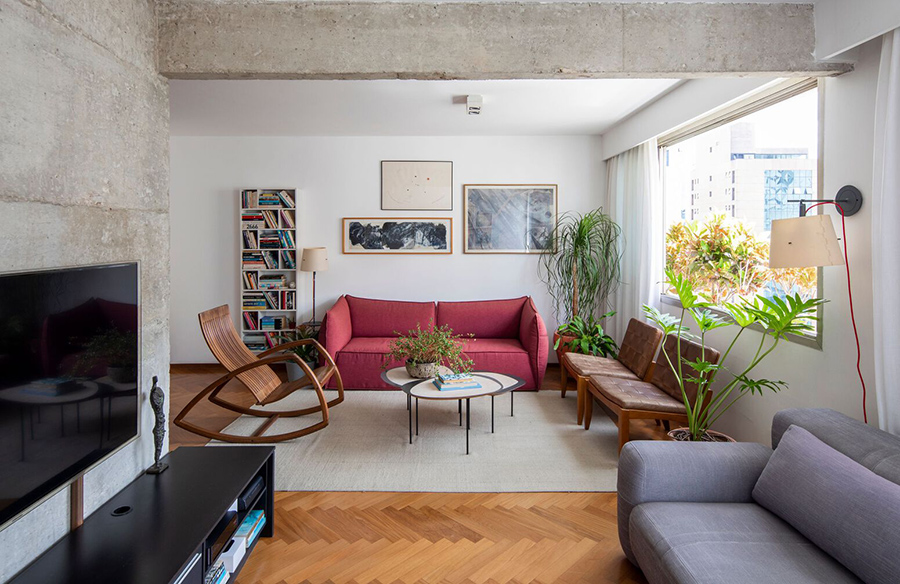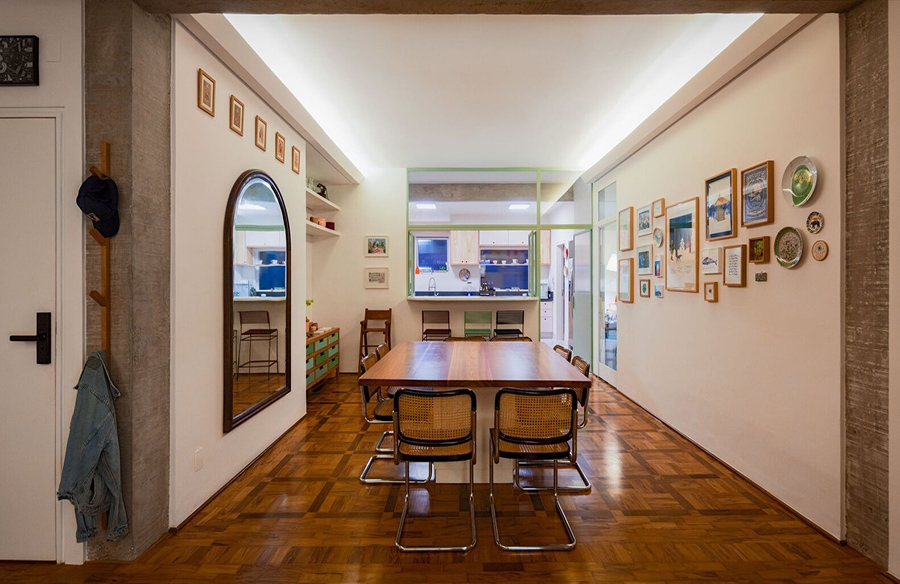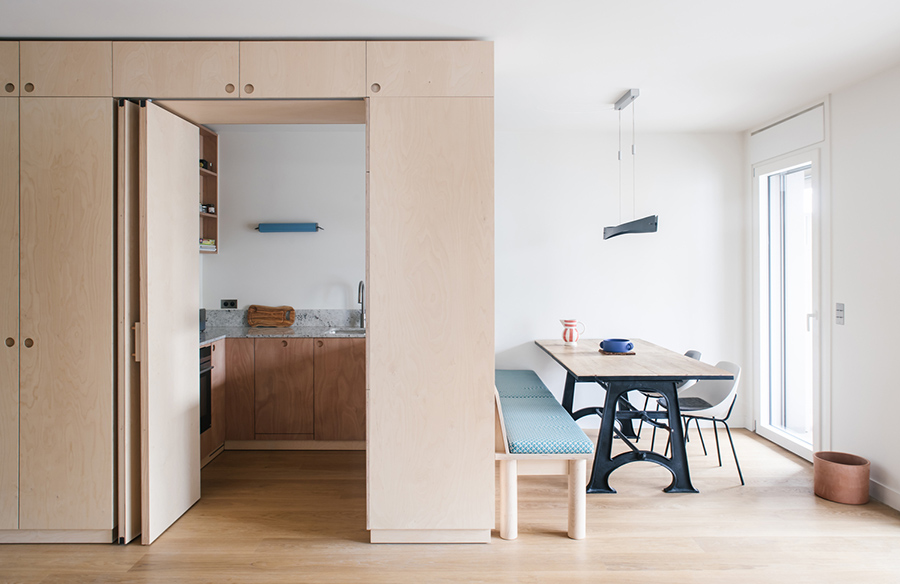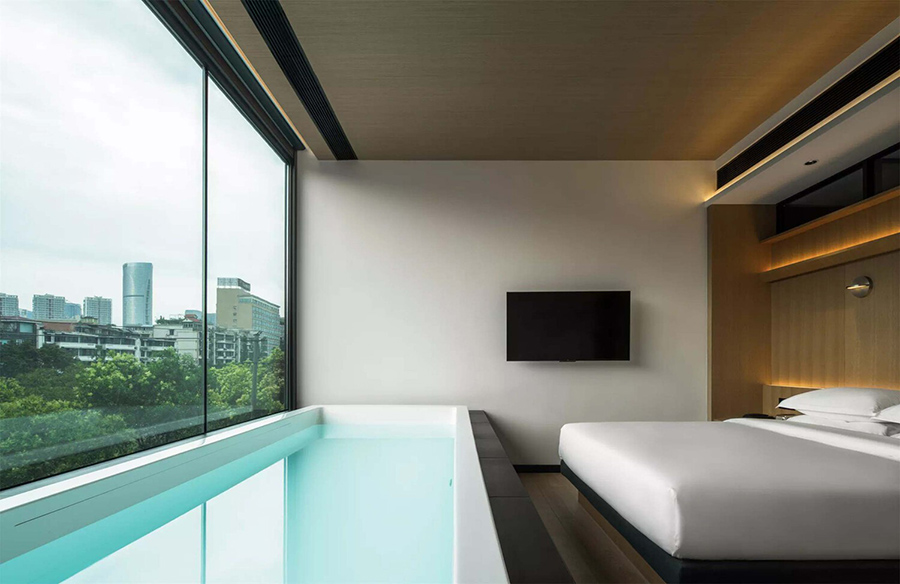STAKK, the beauty salon situated along Osaka’s orange street, helmed by Mr. Masaki Yoshida, introduces a unique concept inspired by the idea of stacking. Originating from the term “stack,” symbolizing accumulation, the salon’s design narrative draws from Mr. Yoshida’s logical approach to hairstyling, depicted in his grid-like sketches analyzing head shapes.
Grid-based Design
Embracing the grid concept, the interior design of STAKK Hair Salon revolves around a mesh of lines forming a foundation. From floor tiles to wall surfaces, the grid layout not only organizes spatial functions but also determines the arrangement of mirrors and seating spacing. Stainless-steel booths housing shampoo sinks are strategically positioned at the center, while rows of seats line the exterior.
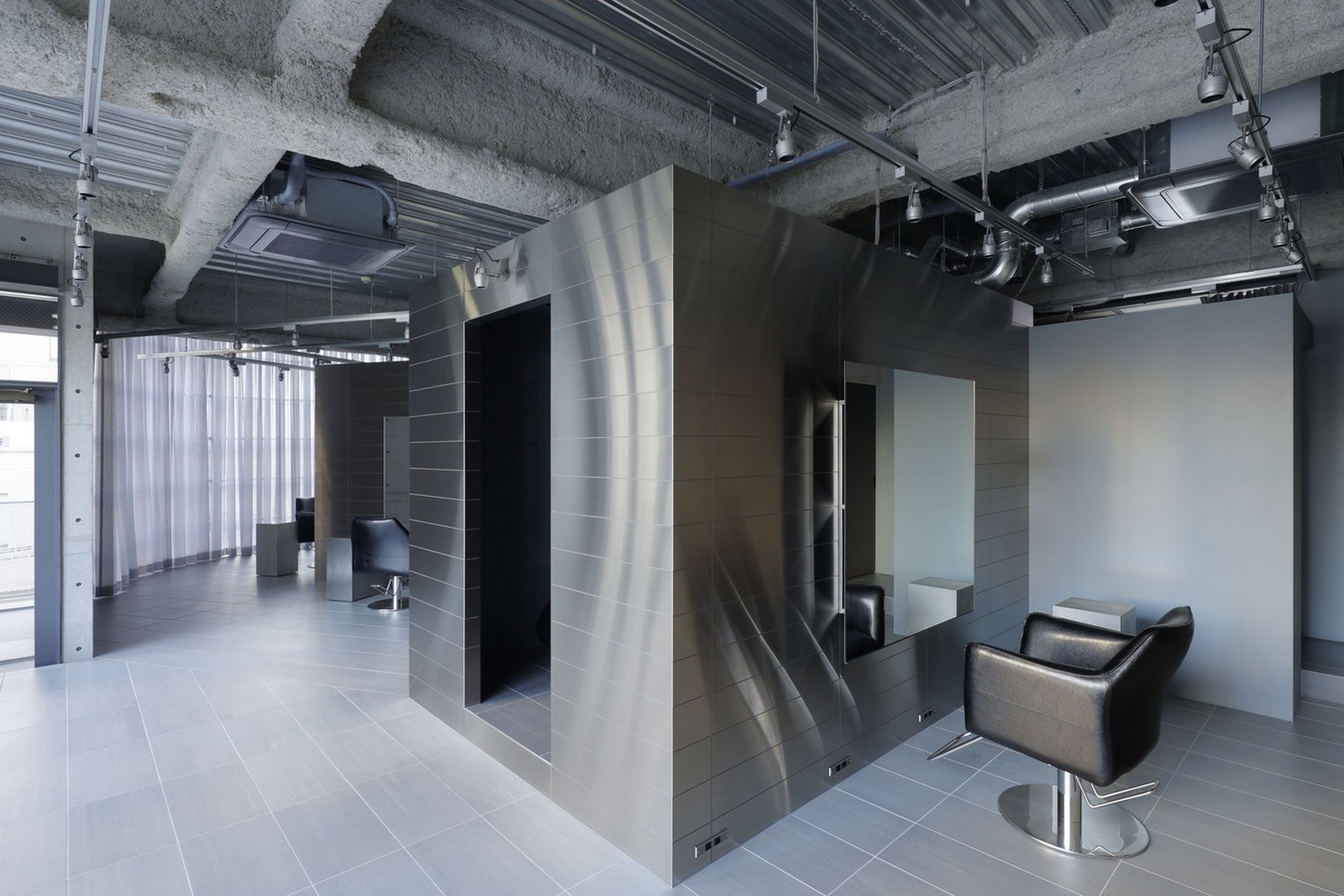
Periodic Subdivision Aesthetic
Wood wool cement tiles, meticulously cut into periodic segments, adorn the inner wall surfaces, echoing the salon’s name and embodying the owner’s logical concept of periodic subdivision. This design element not only enhances aesthetics but also serves a practical purpose by mitigating noise.
Spatial Harmony
The salon’s design prioritizes balance and object spacing, aiming to maintain a sense of order and coherence. Distances between objects and people are meticulously calculated, with walls and floors aligned parallel to the seating area. Strategic placement of shampoo booths creates visual “blind spots” without necessitating additional walls.
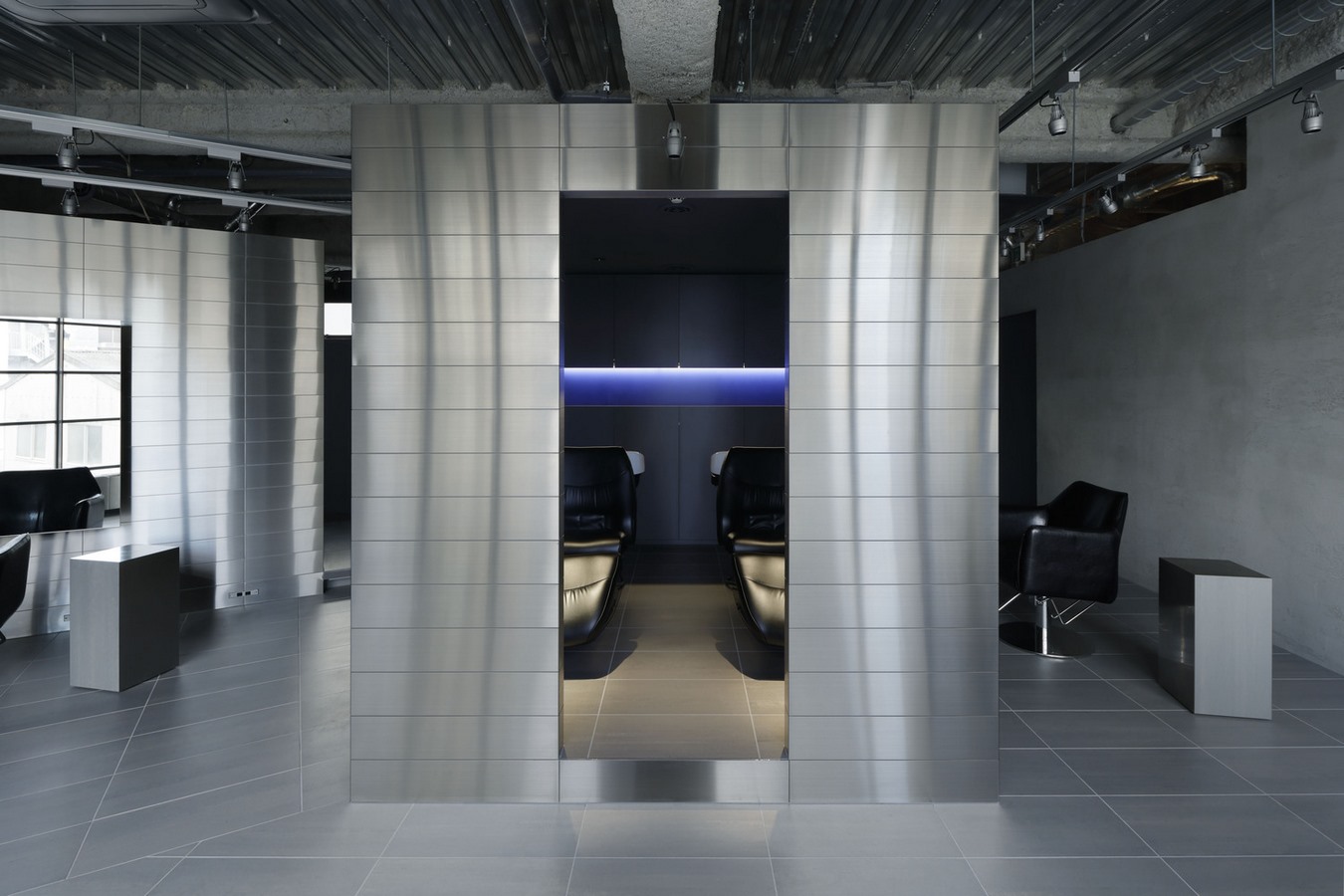
Scalability and Durability
Anticipating future expansions, the design incorporates modular elements, such as stainless steel tiles, allowing for easy attachment of mirrors and flexible reconfiguration of seating areas. The use of modular materials ensures easy maintenance and replacement, contributing to the salon’s longevity and environmental sustainability.
Forward-thinking Approach
STAKK Hair Salon’s design ethos extends beyond aesthetics, emphasizing functionality, adaptability, and environmental consciousness. By integrating modular design principles and thoughtful spatial planning, the salon sets a precedent for sustainable and user-centric architectural practices in the beauty industry.

